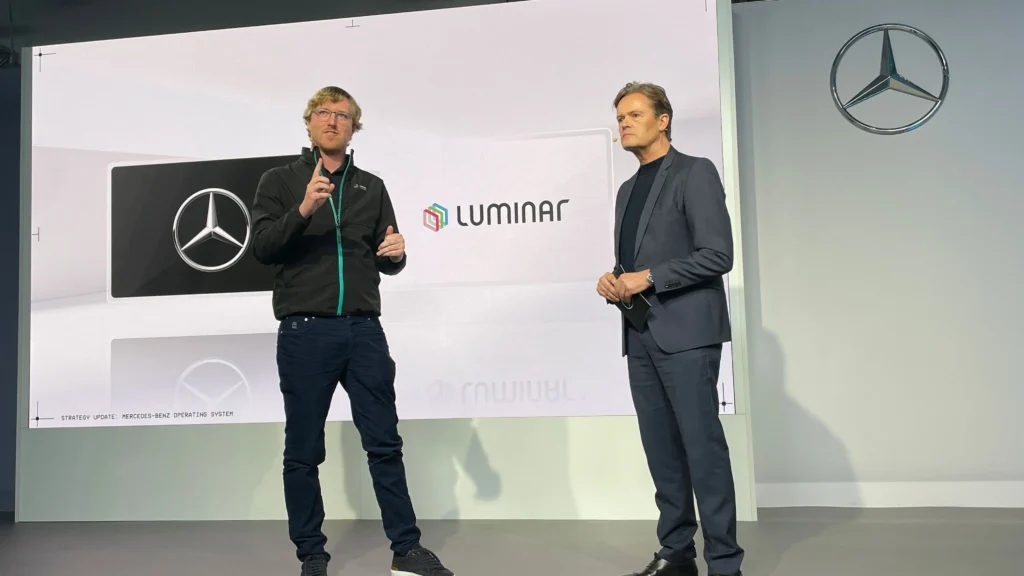Mercedes-Benz has entered into a new agreement with Luminar Technologies to co-develop and integrate the firm’s latest lidar system, according to Luminar’s CEO, marking a shift from a previous supply contract focused on existing sensors.
This marks the first deal for Luminar’s new Halo lidar, a more compact and energy-efficient sensor than its predecessor, Iris. The move comes as global automakers accelerate efforts to launch safer, more autonomous vehicles.
“We’re working with Mercedes on a global scale to develop and integrate this technology into their vehicles,” said Luminar CEO Austin Russell. “The ultimate goal is to bring this into scaled production.”
The lidar market, while still relatively small, is growing, driven by increasing adoption of autonomous and driver-assistance features across the automotive industry. Lidar (light detection and ranging) works by emitting laser pulses to map the environment in three dimensions, improving a vehicle’s ability to detect obstacles and navigate safely.
Mercedes-Benz confirmed it collaborates with several lidar suppliers, including French automotive parts manufacturer Valeo. “Mercedes-Benz is also working together with Luminar to evaluate next-generation lidar technology,” the company said in a statement to Reuters, though it declined to provide further details.
Last month, Reuters reported that Mercedes had also signed a global supply agreement with Chinese lidar manufacturer Hesai, though the company did not comment on that arrangement.
Mercedes previously planned to incorporate Luminar’s Iris sensors into its vehicles by mid-decade under a supply contract signed more than two years ago. However, that plan has now been paused in favour of this new development agreement centred on the Halo sensor, which Luminar expects to roll out in 2026. Development work will continue over the next few years, Russell confirmed.
Although the current agreement does not constitute a supply contract, it could pave the way for one in the future.
Some of Mercedes’ flagship models are already equipped with Valeo lidar and can operate autonomously in limited conditions without constant driver supervision. The automaker has stated it intends to expand its advanced driver assistance capabilities across a wider range of vehicles.
High-end consumer vehicles typically use one or two discreet lidar sensors integrated into the roofline or behind the windscreen, unlike robotaxis, which rely on several bulky rotating units for 360-degree vision.
Luminar’s Halo sensor is both smaller and more efficient than the Iris and is designed to be less visually intrusive when fitted on a vehicle.
Despite ongoing legal and geopolitical risks, Mercedes has reportedly selected China’s Hesai, currently the world’s largest lidar manufacturer for global deployment due to its cost-effectiveness and scalable production capabilities. Hesai’s latest ATX sensors are priced at approximately $200 each, while Luminar has set a target price of $500 for the Halo.
Automakers often work with multiple suppliers to mitigate risk, particularly amid geopolitical tensions such as the ongoing US-China trade dispute.
Luminar currently operates a manufacturing site in the United States but produces most of its sensors in overseas facilities located in Mexico, Thailand, and China. Russell noted the company may consider shifting Halo production to the US if trade tariffs are not resolved.

